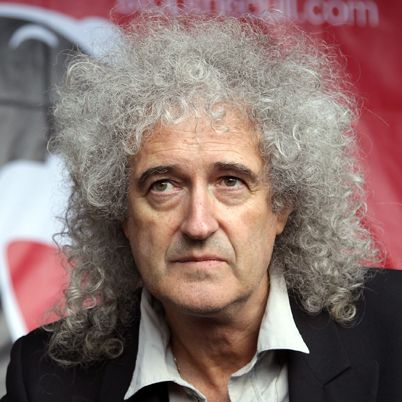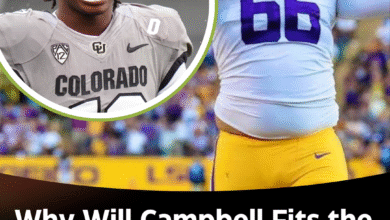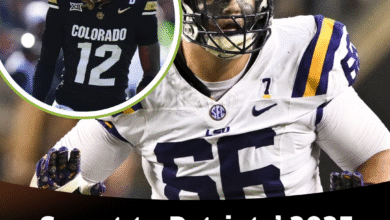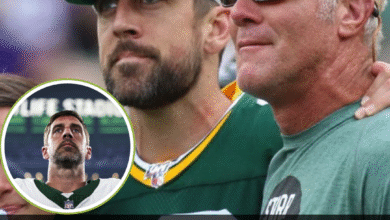Brian May vs. Paul McCartney: The Explosive Animal Rights Feud Glastonbury Tried to Bury
OPINION: This article may contain commentary which reflects the author's opinion.
Brian May and Paul McCartney’s Animal Rights Clash at Glastonbury 2004
In the summer of 2004, Glastonbury Festival, one of the world’s most iconic music events, became the unexpected backdrop for a heated dispute between two rock legends: Queen’s Brian May and The Beatles’ Paul McCartney. Both renowned for their musical genius and their fervent advocacy for animal rights, the two musicians found themselves at odds over ethical concerns tied to the festival’s operations. While the public reveled in the performances at Worthy Farm, a behind-the-scenes clash unfolded, one that festival organizers were keen to keep under wraps. This article delves into the controversy, exploring the roots of their disagreement, the public’s perception, and the broader implications for animal rights activism within the music industry.
The Context: Animal Rights and Glastonbury
Glastonbury Festival, held annually in Somerset, England, is more than just a music event; it’s a cultural institution that prides itself on its progressive values, including environmentalism and social justice. By 2004, the festival had already established a reputation for supporting charitable causes, with proceeds often benefiting organizations like Greenpeace and Oxfam. However, its operations as a working dairy farm under the stewardship of founder Michael Eavis brought it into conflict with animal rights activists, including Brian May.

May, a lifelong advocate for animal welfare, had been vocal about his opposition to practices like badger culling, which was supported by some farmers, including Eavis, to control bovine tuberculosis. His commitment to animal rights was not merely rhetorical; he founded the Save Me Trust to combat animal cruelty and was known to scrutinize events for their ethical practices. Paul McCartney, a vegetarian since the 1970s and a prominent supporter of animal rights campaigns, shared similar values. His advocacy, alongside his late wife Linda, had popularized vegetarianism and inspired initiatives like Meat Free Monday. Given their shared principles, one might assume May and McCartney would be aligned on all fronts. Yet, their approaches diverged sharply at Glastonbury 2004.

The Clash: A Question of Participation
The controversy began when Paul McCartney was announced as a headliner for the 2004 Glastonbury Festival, marking his first UK festival appearance. His performance on the Pyramid Stage was a historic moment, drawing massive crowds and critical acclaim. However, Brian May, who had previously expressed reluctance to engage with Glastonbury due to its farming practices, reportedly took issue with McCartney’s decision to perform. According to sources close to the event, May viewed McCartney’s participation as a tacit endorsement of the festival’s agricultural practices, particularly its association with dairy farming and badger culling.
May’s stance was rooted in his broader campaign against badger culls, which he described as a “tragedy and unnecessary crime against wildlife.” He had publicly clashed with Eavis, who defended culling as a necessary measure to protect livestock. For May, performing at Glastonbury could be seen as aligning with a system that contradicted his ethical convictions. McCartney, however, appeared to take a more pragmatic approach. While firmly opposed to animal cruelty, he saw the festival as a platform to reach millions, potentially amplifying his message of compassion and sustainability. His set included subtle nods to his activism, with vegetarian food stalls promoted in his rider, but he avoided direct confrontation with the festival’s farming practices.
The disagreement reportedly culminated in a private exchange between the two musicians. May, feeling that McCartney’s participation undermined the animal rights cause, expressed his concernsവ
Aftermath and Legacy
The clash between May and McCartney remained largely hidden from the public at the time, as Glastonbury’s organizers were eager to maintain the festival’s positive image. However, whispers of the dispute circulated within music and activist circles, highlighting the challenges of balancing artistic platforms with ethical convictions. The incident underscored the complexities of animal rights advocacy, where even allies can differ on strategy and impact.
In the years following 2004, both May and McCartney continued their activism, albeit in distinct ways. May intensified his campaign against badger culling, while McCartney expanded his environmental and animal rights initiatives. Their Glastonbury clash, though fleeting, served as a reminder that even among those united by a cause, differences in approach can spark significant debate.
The 2004 Glastonbury controversy remains a lesser-known chapter in the festival’s history, overshadowed by its musical triumphs. Yet, it offers valuable lessons about the intersection of art, activism, and ethics, challenging us to consider how public platforms can both amplify and complicate moral convictions.



